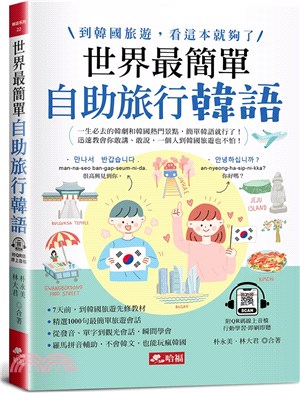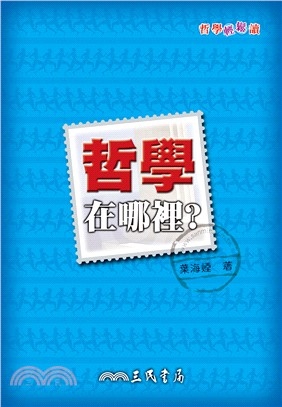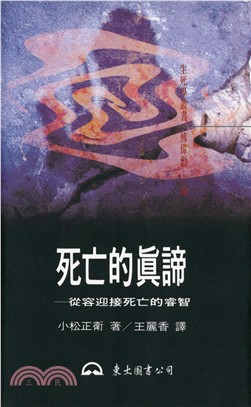商品簡介
從目前出版教材角度看,在知識體系結構上,全面闡述了高分子材料的基本理論、方法,並涵蓋了它在高分子分子理論,高分子材料製備,高分子材料加工設備,高分子材料加工工藝、高分子材料應用等內容,形成了一套完整的知識體系框架。 本教材選材應力求在有限的篇幅內盡可能涵蓋高分子材料與工程的學科領域,在內容上應力求反映高分子材料與工程學科的特點,並能較全面的反映了該領域近年的發展。課文正文應全部選用英文原版經典教材,使學生真正領會英文原版教材中專業知識的精髓。 本教材應該既可作為高分子材料與工程專業必修的基礎課,又可以作為該領域專業課的雙語教材或專業英語教學用書,也可作為從事高分子物理、高分子合成、高分子材料、高分子成型加工、研製及應用工。
作者簡介
留丹麥工學博士,丹麥聚合物研究中心研究員,天津科技大學材料科學與化學工程學院教授,博士研究生導師,主要從事高分子材料改性、結構與性能以及成型加工方面的研究。
材料加工工程學科學術帶頭人,任高分子材料與工程系系主任。
1985~1987在英國Bradford大學留學,在丹麥國家實驗室和丹麥技術大學留學,其餘時間在天津科技大學高分子工程專業任教。
主要研究方向:聚合物合金與高分子復合材料,聚合物材料的功能化料綜合利用技術,藥物緩釋包衣材料,聚合物成型加工技術等。
序
前言
本教材是中國輕工業“十三五”規劃教材,其前身是“高分子材料工程專業英語”, 2010年改名為“聚合物科學與工程導論”,是應中國輕工業出版社委託,及國內20幾所輕工院校高分子材料與工程專業的要求而編寫和修訂的。自1999年該教材被列為本科生必修專業課程以來,該教材被國內20幾所大學列為本科專業必修課程,經過近20年多屆學生使用,效果較好。此次修訂,除對第一版教材中各章內容,針對近年來的發展變化進行了修改和充實外,還增寫了聚合物熱分析單元。
本教材分為七個單元共45課,內容涉及聚合物發展史、聚合物科學基本概念、聚合物基礎知識、聚合物合成、聚合物性能、聚合物熱?析、聚合物材料和聚合物成型?工。
課文正文全部選用英文原版經典教材,使學生真正領會英文原版教材中專業知識的精髓。本教材既可作為高分子材料與工程專業必修的基礎課,又可作為該領域專業課的雙語教材或專業英語教學用書,也可作為從事高分子材料與工程研究領域的科技人員、教師及研究生提高業務及其專業英語水平的學習參考書。
本教材每課都附有練習題和閱讀材料,便於學生對課文內容的理解,其閱讀取材豐富,形式靈活,圖文並茂、直觀生動、深入淺出,簡明易懂。每課除正文和閱讀材料外,都標出了專業詞彙的生詞,並註有音標、常用短語和詞組, 並將課文的難點做了中文註釋,可與中文內容對照學習。教材書後列出了總詞彙表與術語的中英文對照表,便於查閱。
本教材由天津科技大學的揣成智、萬同、褚立強、王彪編寫。全書由主編揣成智,副主編萬同統稿。
在本教材編寫過程中,得到中國輕工業聯合會、中國輕工業出版社、天津科技大學及兄弟院校有關領導和同仁的幫助與支持,謹此致謝。
由於水平所限, 難免有不足和錯漏之處, 誠懇希望使用本書的讀者批評指正。
編者
2019年3月
目次
PART 1 INTRODUCTION
第一部分 概述
Lesson 1 Introduction to History of Polymer Science
聚合物科學史引言
History of Polymer Science
聚合物科學史
Lesson 2 Basic Concepts of Polymer Science
聚合物科學基本概念
Basic Concepts of Polymers
聚合物基本概念
PART 2 FUNDAMENTALS OF POLYMER
第二部分 聚合物基礎
Lesson 3 Types of Polymers
聚合物類型
Chemistry of Synthesis
合成材料化學
Lesson 4 Configurational States
構型
Conformational State
構象
Lesson 5 Structure of Synthesis
合成材料結構
Bonding in Polymers
聚合物鍵合
Lesson 6 Chain Conformation
鏈構象
Chains with Preferred Conformation
有優勢構象的鏈
Lesson 7 Polymer Morphology
聚合物形態
Amorphous Polymers
無定性聚合物
Lesson 8 Molar Mass
分子量
Characterization of Polymer Molecular Weight
聚合物分子量特徵
Lesson 9 Polymer Solubility and Solutions
聚合物溶液和溶解性
The Thermodynamic Basis of Polymer Solubility and Solubility Parameter
聚合物溶解熱力學基礎和溶解度參數
Lesson 10 Transitions in Polymers
聚合物轉變
Orientation and Drawing of Polymer
聚合物取向和拉伸
PART 3 POLYMER SYNTHESIS
第三部分 聚合物合成
Lesson 11 Step-Growth (Condensation) Polymerization
逐步增長(縮合)聚合
Step Reaction Polymerization
逐步反應聚合
Lesson 12 Free-Radical Addition (Chain-Growth) Polymerization
自由基加成(鏈增長)聚合
Chain Reaction Polymerization
鏈式反應聚合
Lesson 13 Emulsion Polymerization(1)
乳液聚合(1)
Emulsion Polymerization(2)
乳液聚合(2)
Lesson 14 Ionic Polymerization
離子聚合
Bulk Polymerization
本體聚合
PART 4 POLYMER PROPERTIES
第四部分 聚合物性能
Lesson 15 Rubber Elasticity
橡膠的彈性
Purely Viscous Flow
純粘性流動
Lesson 16 Flow Curves of Polymer Fluid
聚合物流體的流動曲線
Time-Dependent Fluid Behavior
有時間依賴性流體的流動行為
Lesson 17 Polymer Melts and Solutions
聚合物熔融和溶解
Creep and Stress Relaxation of Polymer
聚合物蠕變和應力鬆弛
Lesson 18 Linear Viscoelasticity of Polymer
聚合物的線性粘彈性
Mechancal Behaviour of Glassy, Amorphous Polymers Phenomenological Models
玻璃態,非晶態聚合物的機械行為模型
Lesson 19 Time-Temperature Superposition of Polymer
聚合物的時-溫等效(疊加)
Temperature Dependence of Relaxation Time Spectrum
鬆弛時間譜的溫度依賴性
PART 5 THERMAL ANALYSIS OF POLYMERS
第五部分 聚合物熱分析
Lesson 20 Thermo-Analytical Methods
熱分析方法
Thermal Optical Analysis (TOA)
熱光學分析(TOA)
Lesson 21 Differential Thermal Analysis and Calorimetry
差熱分析和量熱法
Thermogravimetry
熱重分析法
Lesson 22 Dilatometery/Thermal Mechancal Analysis (TMA) and Dynamic Mechanical Thermal Analysis (DMTA)
膨脹/熱力學分析(TMA)和動態力學熱分析(DMTA)
Dielectric Thermal Analysis (DETA)
電介質熱分析(DETA)
Lesson 23 Thermal Behaviour of Semicrystalline Polymers
半晶態聚合物的熱行為
Thermal Behavior of Amorphous Polymers
非晶態聚合物的熱行為
Lesson 24 Thermal Behaviour of Liquid-Crystaline Polymers
液晶聚合物的熱行為
Polymers Degradation
聚合物降解
PART 6 POLYMER MATERIALS
第六部分 聚合物材料
Lesson 25 Plastics
塑料
The Historical Development of Plastics Industry
塑料工業發展史
Lesson 26 Polyethylene
聚乙烯
Polypropylene
聚丙烯
Lesson 27 Vinyl Resins and Polyvinyl Chloride
乙烯基樹脂和聚氯乙烯
Styrene Resins and Polystyrene
苯乙烯樹脂和聚苯乙烯
Lesson 28 Styrene-Acrylonitrile (SAN) and Acrylonitrile-Butadiene-Styrene (ABS)
苯乙烯-丙烯腈(SAN)和丙烯腈-丁二烯-苯乙烯共聚物(ABS)
Polyurethane
聚氨酯
Lesson 29 Polycarbonate
聚碳酸酯
Nylon
尼龍
Lesson 30 Tetrafluoroethylene
聚四氟乙烯
Epoxy Resins
環氧樹脂
Lesson 31 Phenol Formaldehyde Resins
酚醛樹脂
Polyester
聚酯
Lesson 32 The Historical Development of Rubber
橡膠發展史
Synthetic Rubber
合成橡膠
Lesson 33 Rubber Materials
橡膠材料
Rubber Compound Design
橡膠配方設計
Lesson 34 Synthetic Fibers (1)
合成纖維 (1)
Synthetic Fibers (2)
合成纖維 (2)
Lesson 35 Adhesives
黏合劑
Five Organic Adhesives
五種有機黏合劑
PART 7 POLYMER MOLDING AND PROCESSING
第七部分 聚合物成型加工
Lesson 36 Introduction to Plastics Molding and Processing
塑料成型加工引言
Rubber Product Manufacturing Systems
橡膠製品加工體系
Lesson 37 Injection Molding
注塑模塑
Injection Molding Machines and Molds
注塑機和模具
Lesson 38 Extrusion
擠出
Extrusion and Flat Sheet Extrusion
擠出和片材擠出
Lesson 39 Blow Mlding
吹塑模塑
Blown Film, Flat and Wire Coating Extrusion
吹膜,平片和線材包覆擠出
Lesson 40 Calendering
壓延
Laminating Molding
層壓模塑
Lesson 41 Plastic Foam Molding
泡沫塑料模塑
Casting Molding
鑄塑
Lesson 42 Thermoforming
熱成型
Material Compounding of Polymer
聚合物材料的配製
Lesson 43 Rubber Mixing
橡膠的混煉
The Mechanisms of Rubber Mixing
橡膠的混煉機理
Lesson 44 Rubber Extrusion and Mixing
橡膠擠出和混煉
Rubber Calendering and Vulcanization
橡膠壓延和硫化
Lesson 45 Fiber Spinning of Polymer
聚合物紡絲
Principles of the Melt-Spinning of Polymer
聚合物熔融紡絲原理
Glossary
總詞匯表
Phrases and Expressions
常用詞和習慣用語索引
References
參考文獻
書摘/試閱
PART 1 INTRODUCTION
Lesson 1 Introduction to History of Polymer Science
Since the Second World War,polymeric materials have been the fastest-growing segments of the world chemical industry. It has been estimated that more than a third of the chemical research money is spent on polymers, with a correspondingly large proportion of technical personnel working in the area.
A modern automobile contains over 150 kg of plastics, and this does not include paints, the rubber in tires, or the fibers in tires and upholstery. New aircraft incorporate increasing amounts of polymers and polymer-based composites. With the need to save fuel and therefore weight, polymers will continue to replace traditional materials in the automotive and aircraft industries. Similarly, the applications of polymers in the building construction industry (piping, resilient flooring, siding, thermal and electrical insulation, paints, decorative laminates) are already impressive, and will become even more so in the future. A trip through a supermarket will quickly convince anyone of the importance of polymers in the packaging industry (bottles, films, trays). Many other examples could be cited, but to make a long story short ,the use of polymers now outstrips that of metals on a mass basis.
People have objected to synthetic polymers because they are not “natural.” Well, botulism is natural, but it's not particularly desirable. Seriously, if all the polyester and nylon fibers in use today were to be replaced by cotton and wool, their closest natural counterparts, calculations show that there wouldn't be enough arable land left to feed the populace① and we'd be overrun by sheep. The fact is there simply are no practical natural substitutes for many of the synthetic polymers used in modern society.
Since nearly all modern polymers have their origins in petroleum, it has been argued that this increased reliance on polymers constitutes an unnecessary drain on energy resources. However, the raw materials for polymers account for less than two percent of total petroleum and natural gas consumption, so even the total elimination of synthetic polymers would not contribute significantly to the conservation of hydrocarbon resources. Furthermore, when total energy costs (raw materials plus energy to manufacture and ship) are compared, the polymeric item often comes out well ahead of its traditional counterpart , eg, glass vs. plastic beverage bottles. In addition, the manufacturing processes used to produce polymers often generate considerably less environmental pollution than the processes used to produce the traditional counterparts, eg,polyethylene film vs. kraft paper for packaging.
Ironically, one of the most valuable properties of polymers, their chemical inertness, causes problems because polymers do not normally degrade in the environment. As a result, they contribute increasingly to litter and the consumption of scarce landfill space②. Progress is being made toward the solution of these problems. Environmentally degradable polymers are being developed, although this is basically a wasteful approach and we're not yet sure of the impact of the degradation products. Burning polymer waste for its fuel value makes more sense, because the polymers retain essentially the same heating value as the raw hydrocarbons from which they were made. Still, the polymers must be collected and this approach wastes the value added in manufacturing the polymers.
The ultimate solution is recycling. If waste polymers are to be recycled, they must first be collected. Unfortunately, there are literally dozens (maybe hundreds) of different polymers in the waste mix, and mixed polymers have mechanical properties about like cheddar cheese. Thus , for anything but the least-demanding applications (eg, parking bumpers, flower pots), the waste mix must be separated prior to recycling. To this end, automobile manufacturers are attempting to standardize on a few well-characterized plastics that can be recovered and re-used when the car is scrapped. Many objects made of the large-volume commodity plastics now have molded-in identifying marks, allowing hand sorting of the different materials.
Processes have been developed to separate the mixed plastics in the waste. The simplest of these is a sink-float scheme which takes advantage of density differences among the various plastics. Unfortunately, many plastic items are foamed, plated, or filled (mixed with nonpolymer components), which complicates density-based separations. Other separation processes are based on solubility differences between various polymers. An intermediate approach chemically degrades the waste polymer to the starting materials from which new polymer can be made.
主題書展
更多書展本週66折
您曾經瀏覽過的商品
購物須知
大陸出版品因裝訂品質及貨運條件與台灣出版品落差甚大,除封面破損、內頁脫落等較嚴重的狀態,其餘商品將正常出貨。
特別提醒:部分書籍附贈之內容(如音頻mp3或影片dvd等)已無實體光碟提供,需以QR CODE 連結至當地網站註冊“並通過驗證程序”,方可下載使用。
無現貨庫存之簡體書,將向海外調貨:
海外有庫存之書籍,等候約45個工作天;
海外無庫存之書籍,平均作業時間約60個工作天,然不保證確定可調到貨,尚請見諒。
為了保護您的權益,「三民網路書店」提供會員七日商品鑑賞期(收到商品為起始日)。
若要辦理退貨,請在商品鑑賞期內寄回,且商品必須是全新狀態與完整包裝(商品、附件、發票、隨貨贈品等)否則恕不接受退貨。

























